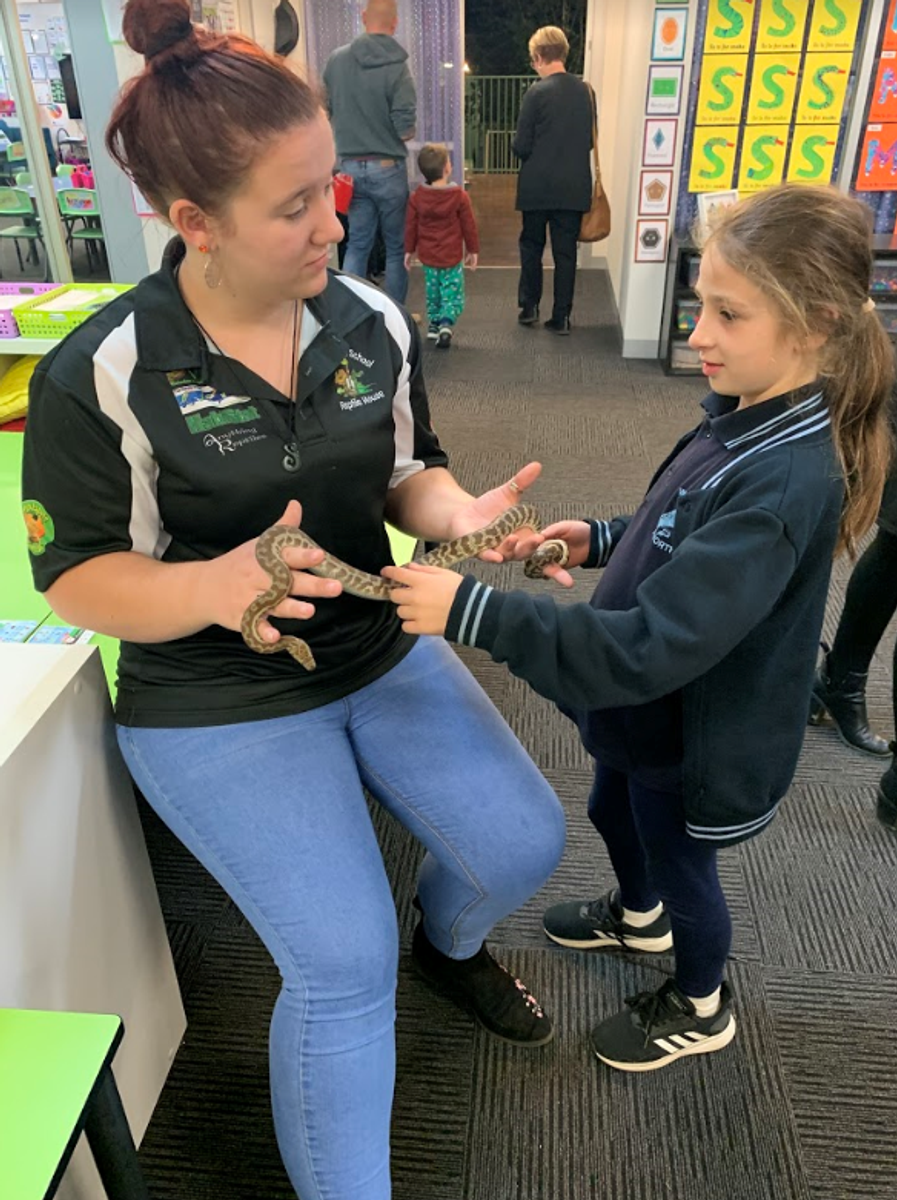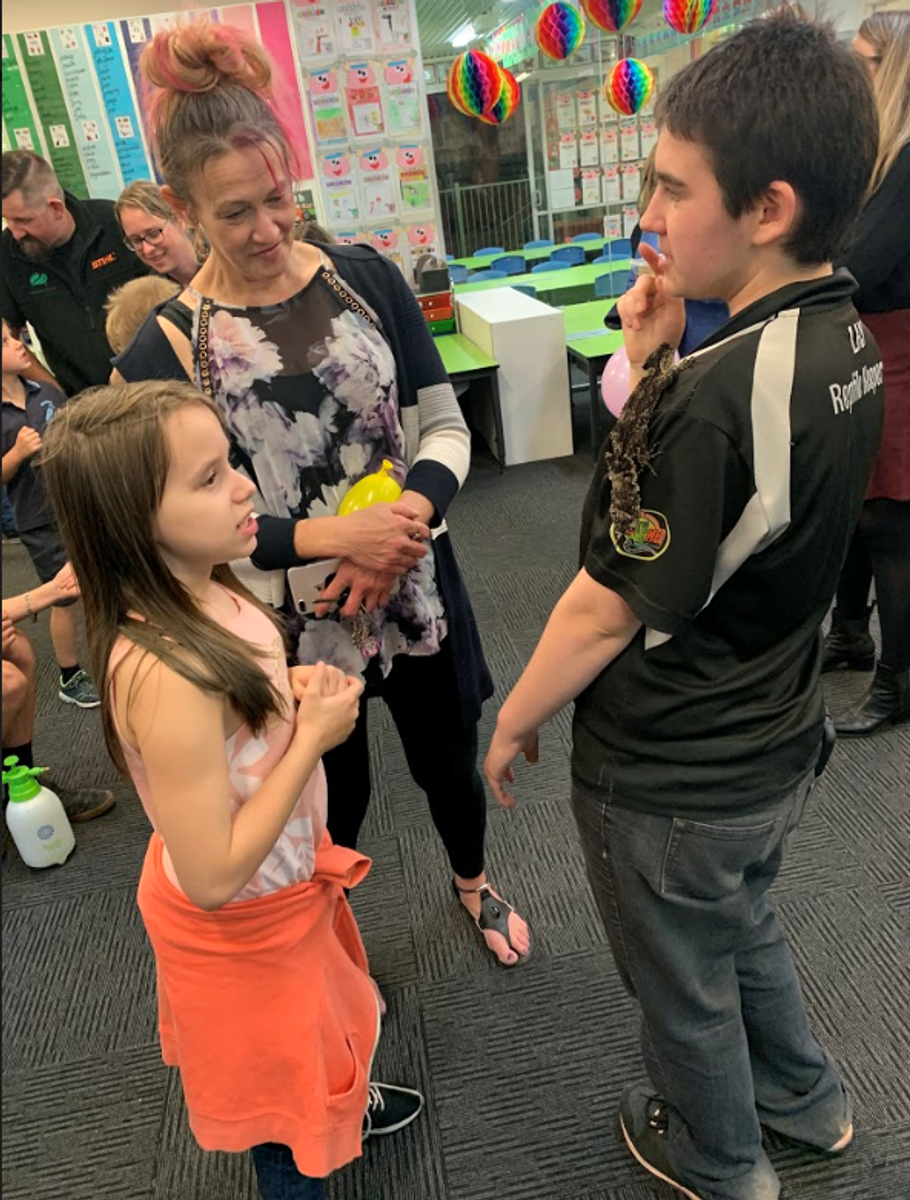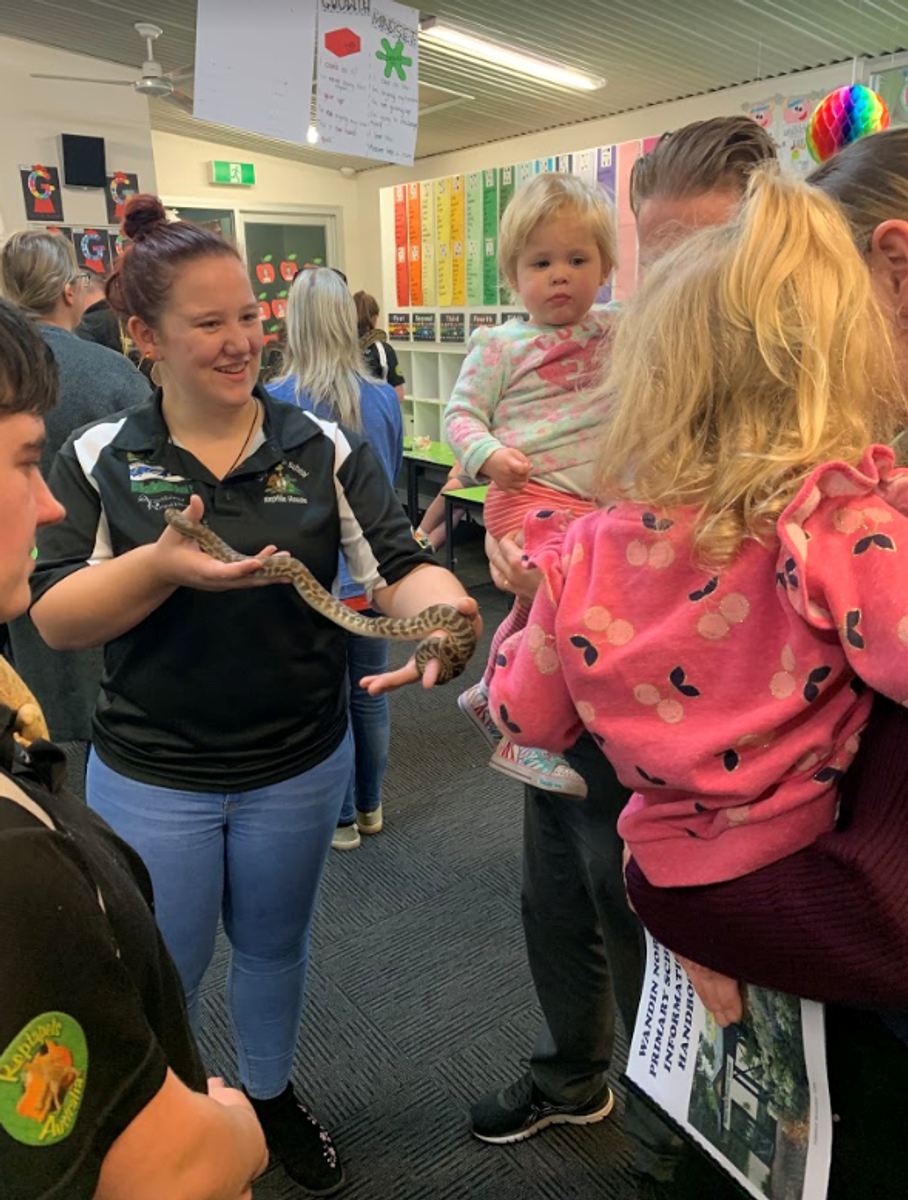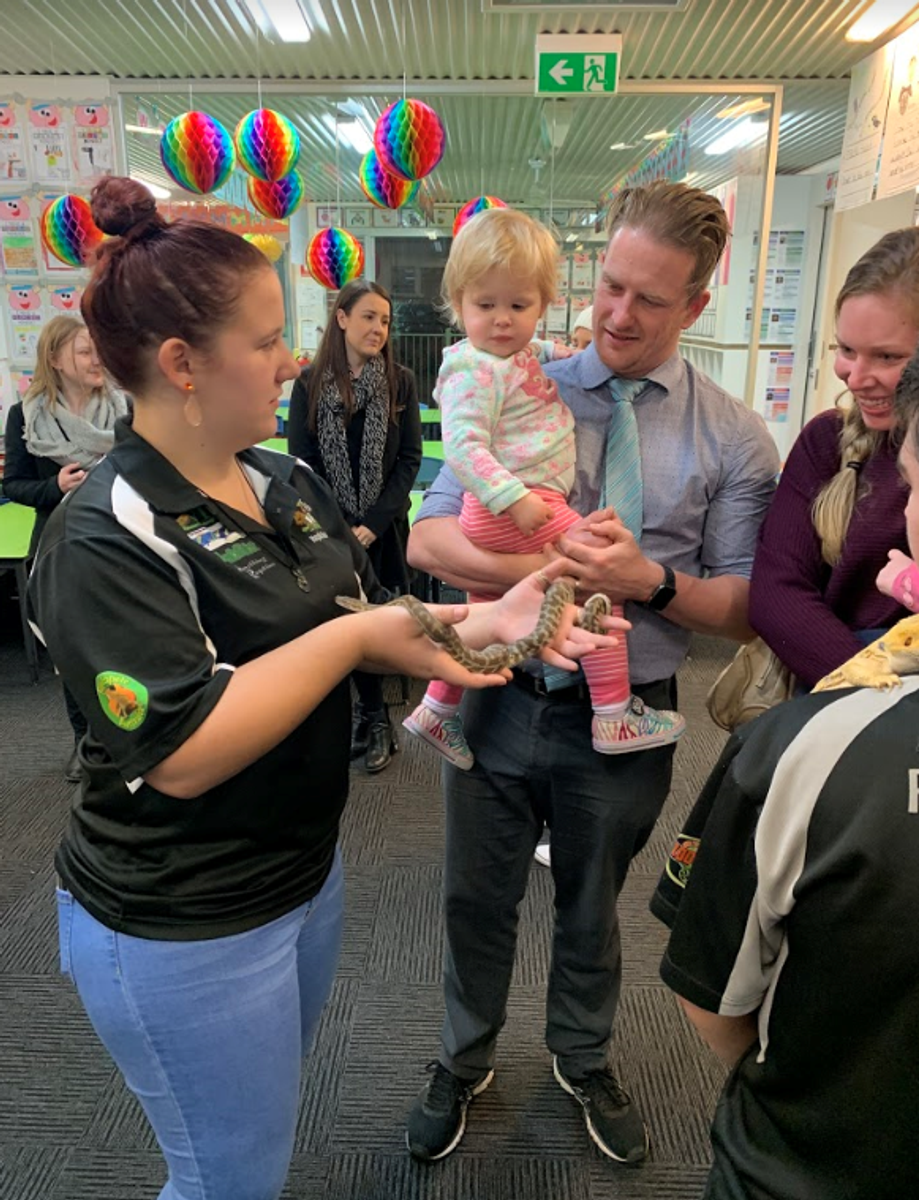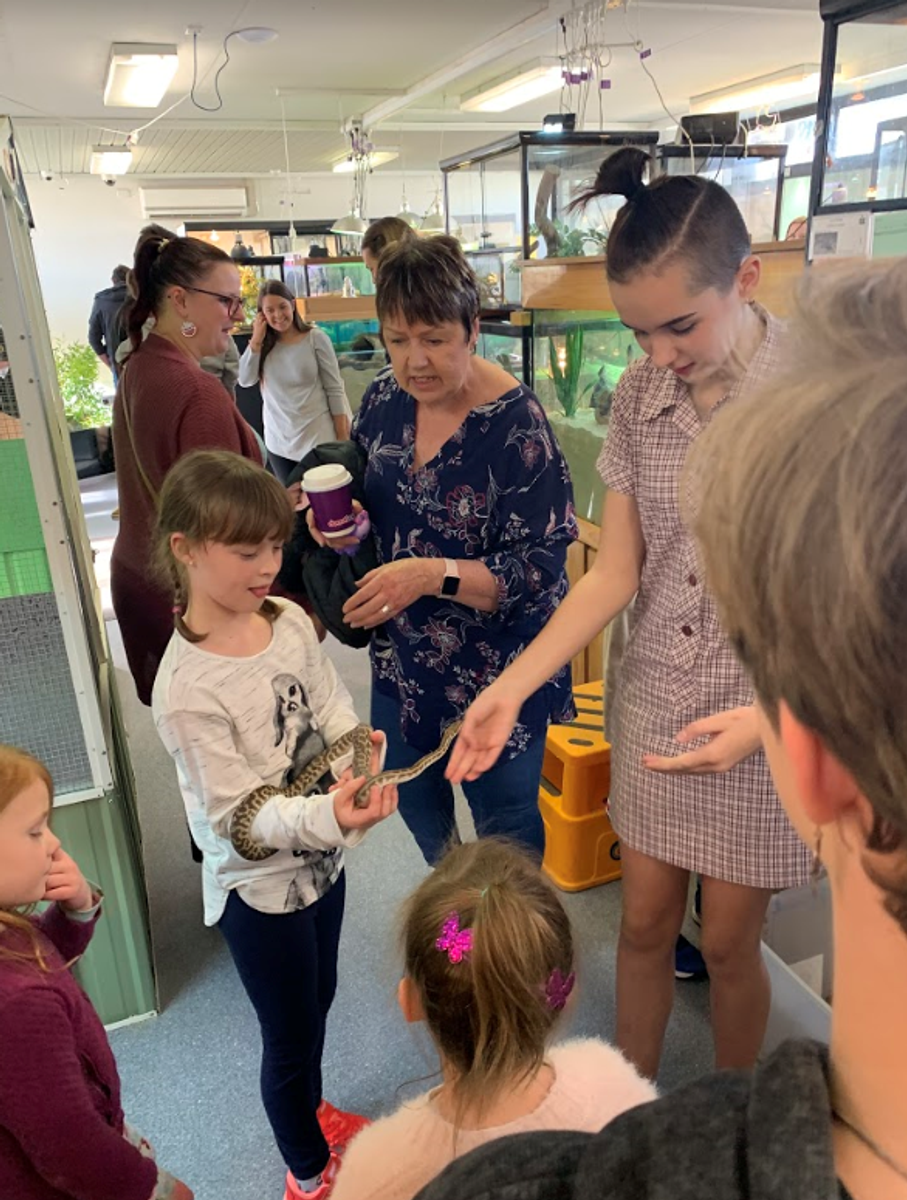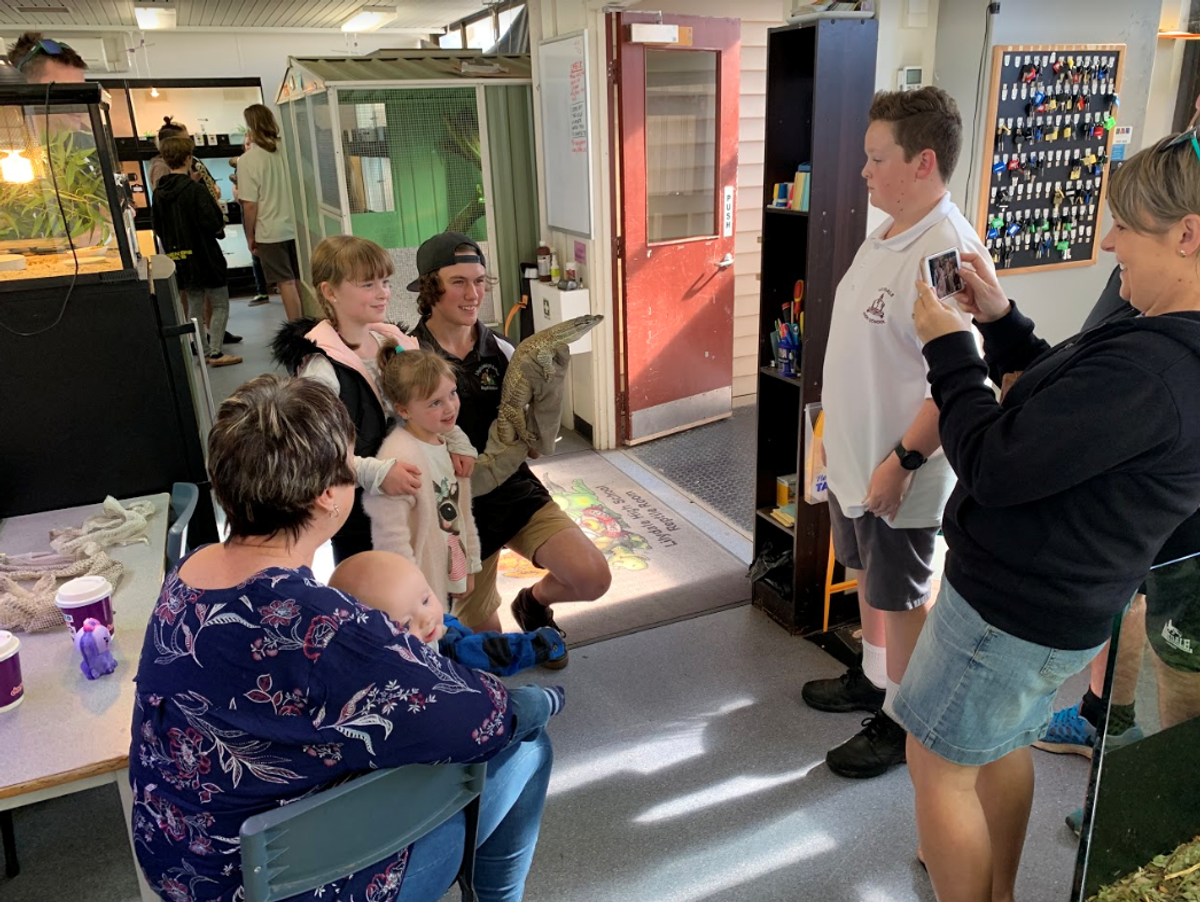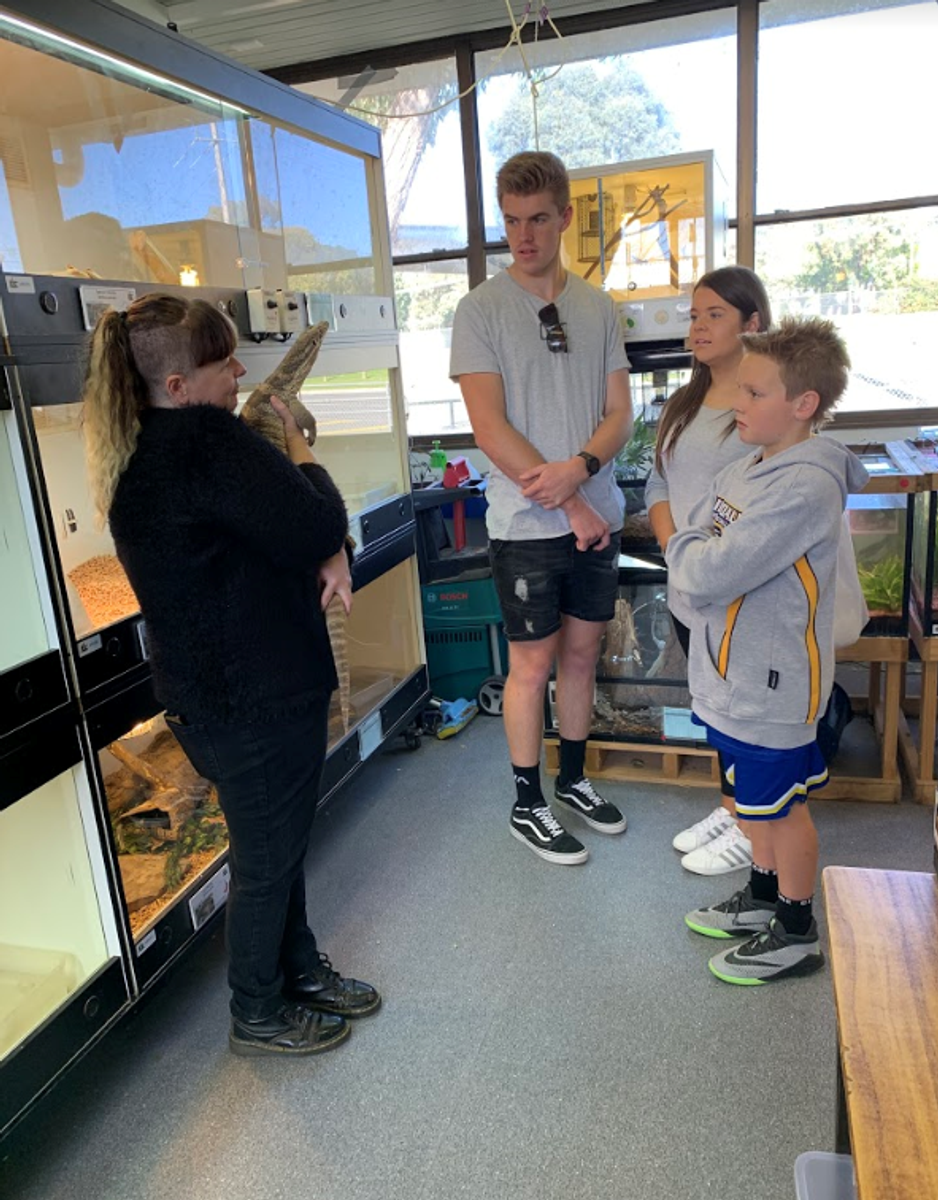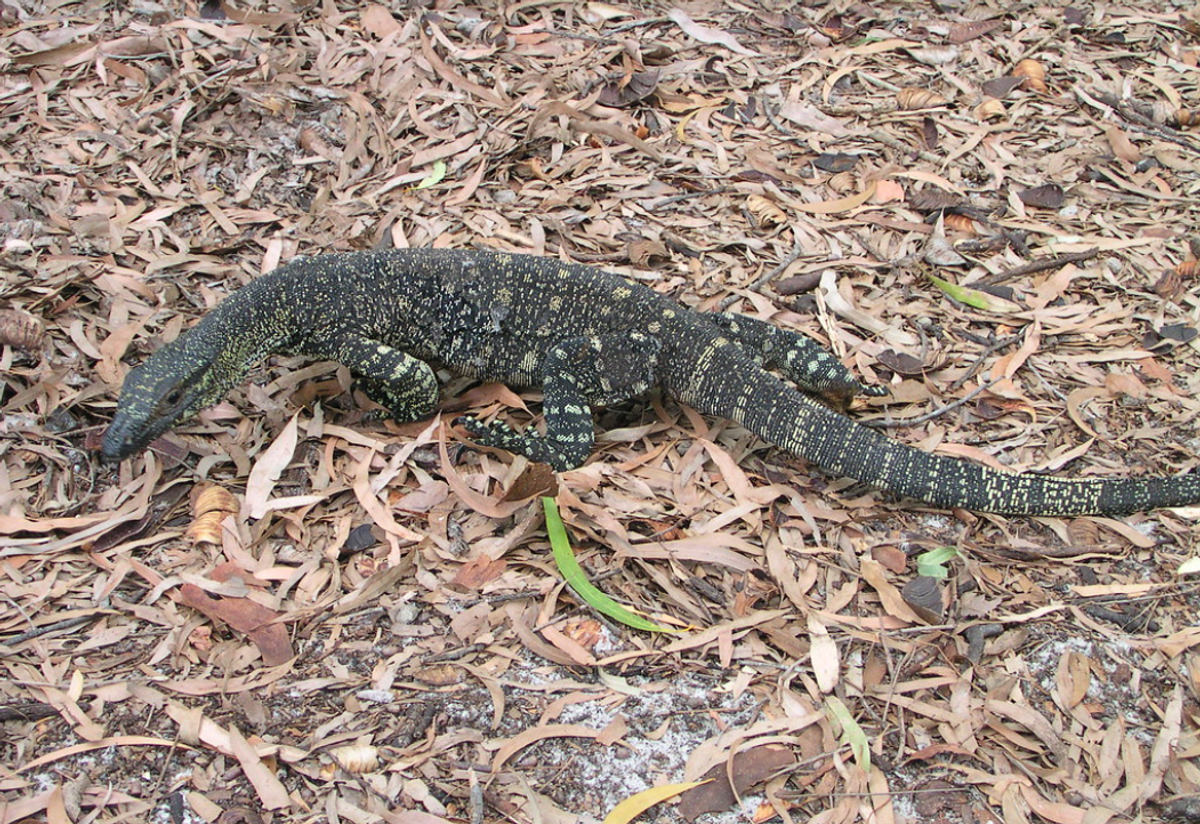REPTILE HOUSE
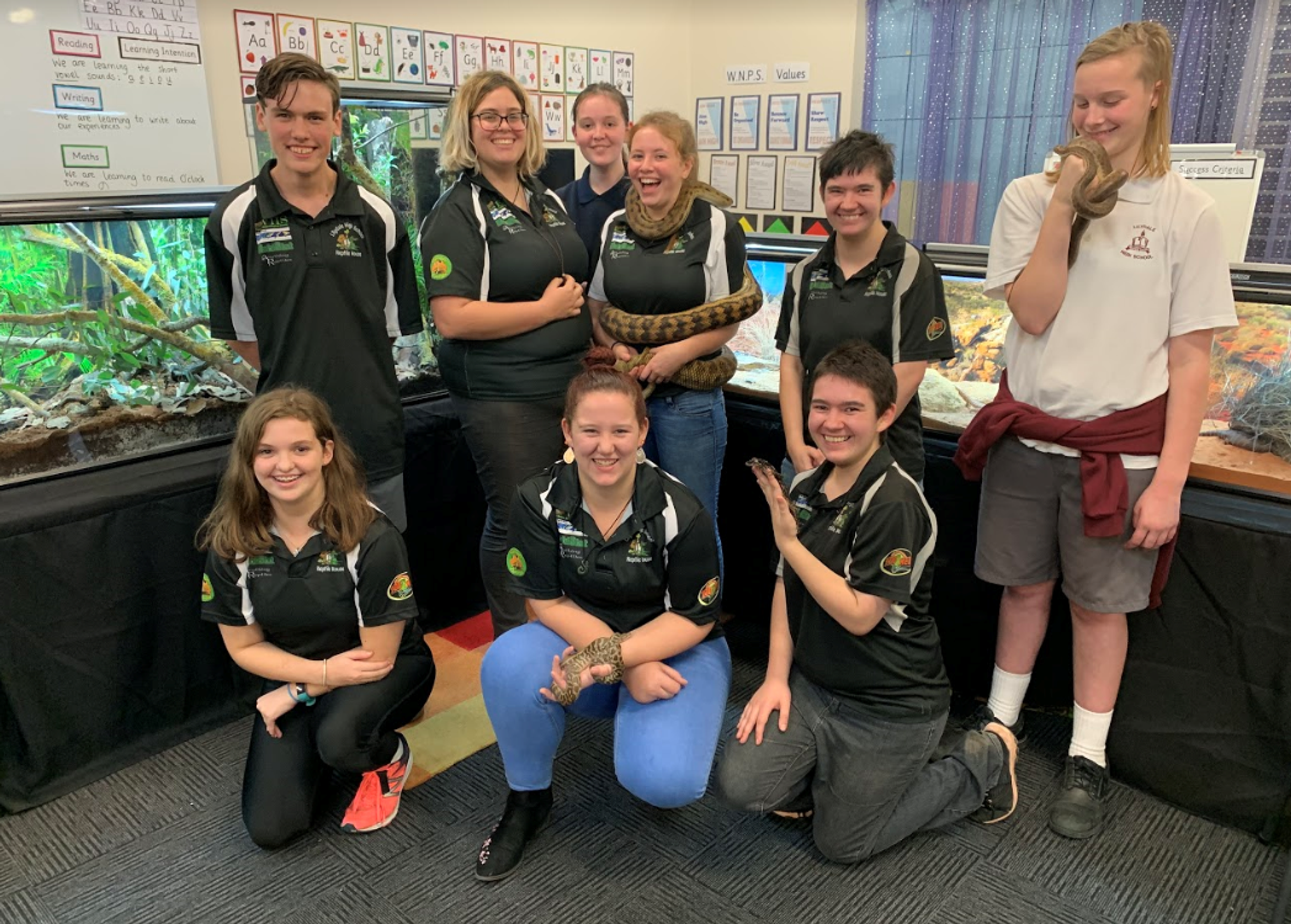
Centenary OPEN DAY and Information Evening
Open Day was a great opportunity for the students to show off their animals. We had a steady flow of people through the doors and the Zoo Keepers were fantastic on the day.
Those who visited were very impressed with the collection but equally impressed with the students and how well they interacted with each other, the animals and members of the public.
The Open Day was followed by an Information Evening at Wandin North Primary School, where we took a small collection of animals and enclosures for young families to have some hands-on experience with our animals. As always, the animals were a big hit and our students were once again, amazing with members of the public and brilliant with the little kids who came along on the night.
Disappointingly, over the Open Day weekend, we had some of animals taken, a few of which, had only been in the collection for a short period of time. This is first time such an incident has occurred in 17 years. The animals taken were; 4 Tree Snakes (3 golden phase, 1 green phase) and 3 Eastern Water Dragons with their terrarium. To say the students and staff are extremely disappointed with the act, would be an understatement. The students had worked so hard to get the animals into the collection in the first place, having to wait months for them to arrive and then when they did, the students did an amazing job of getting the very young snakes feeding regularly and ensuring they had the best conditions to thrive. We have now upgraded the security in the rooms and hope that this will be the last time something like this happens.
As we move into winter, a number of our animals are starting to slow down and go into brumation (a hibernation-like state). This is an important part of the breeding cycle, with some animals, needing very cold conditions over winter in order to breed effectively next season. The students have come up with a long list of animals they are wanted to try and breed, so it will be interesting to see what results we get come springtime. I’m sure we’ll have plenty of good news later this year.
Marcus Whitby
Keeper Profile
Name: Laura Bentley
Age: 13
How long have you been a keeper in the Reptile House?
About a year and a half.
Which animals do you enjoy working with the most?
Mainly small snakes and lizards.
What has been one of your most memorable moments in the Reptile House?
One of my most memorable moments was when I became Assistant Keeper of Diesel, because that meant a lot to me. I think he’s the best snake in the room. To be able to be keeper of him was really special.
What do you enjoy about being a keeper in the Reptile House?
I really enjoy holding the animals and watching them in their enclosures. It makes me really happy and relaxed. I have a dog and 40 fish at home, but my parents are not so keen on the reptiles, so the room allows me to interact with them at school. I’ve got a lot of friends in the room, so we enjoy hanging out together. One of my favourite things to do ,is feeding the animals.
What are you aspirations for the future?
I want to be an actress.
Which animal is your favourite and why?
Diesel is my favourite animal. because I am Assistant Keeper of him and he is so cute! He’s the nicest snake and not too big.
Tells us a little about this animal.
I’ve been working with Diesel for about a year. I became Assistant Keeper of him a few days after I became a keeper.
As an Assistant Keeper, I work with Ellie Pearson to make sure his enclosure is clean, his water is fresh and I get to hold him often. He is the coolest reptile to work with, because he is really friendly and gentle.
A lot of people are scared of snakes and Diesel is a really good snake to help people get over their fears and I like helping people confront their fears because I was terrified of snakes at the start of last year.
Laura has recently been appointed as the Team Leader of the Main Room. She has been very committed to the room since she joined the Zoo Keeper Team over a year ago. The Main Room holds the bulk of our collection and a great variety of species which means, Laura has a lot to learn and a lot of other students to manage.
When asked about the role, Laura had the following to say:
“I really like the challenge. At times it’s difficult because I still have a lot to learn about the animals in the room and what needs to be done, but I really enjoy working with the younger students and helping them learn about animals and what they need to do to be a Zoo Keeper. It’s a bit of a challenge dealing with the older students, but I’m getting better at it. I like the responsibility though and hope to keep on doing it.”
Creature Feature 2 -
Lace Monitor Varanus varius
The Lilydale Reptile House has a variety of monitor lizards.
Monitor lizards are the largest types of lizards in the world and include the massive Komodo Dragon Varanus komodoensis of Indonesia. Australia has the greatest number of species and range in size from the Perentie Varanus giganteus of Central Australia (2.5m) to the tiny Short-tailed monitor aranus brevicauda (230mm) from northern Australia.
Monitor lizards occur in Africa, Asia and Australia but only in Australia are Monitor lizards called goannas. The word goanna, is a corruption of the word iguana, as the early settlers to Australia incorrectly assumed these lizards were iguanas.
The Lace Monitor Varanus varius, is the second largest, but heaviest Australian lizard and is a familiar sight in forested areas of Eastern Australia. It is a powerful creature with a deeply forked tongue, very sharp teeth, long recurved claws and a strong tail. Australian Monitor lizards are carnivorous feeding on anything they can over power. This includes mammals, birds and reptiles. They also feed on road-killed animals and are often killed themselves, by motor vehicles as a consequence of this behaviour.
Lace Monitors are both terrestrial and arboreal, and have a unique reproductive behaviour, where the female deposits her eggs in a termite mound. The termites repair the damage and the mound serves as a natural incubator. The incubation period is about 12 months and the mother returns to the mound to release the hatching young. It is not well understood how the mother knows when the young are hatching. but it may simply be that she returns to the mound to lay the next seasons eggs and in the process inadvertently releases the hatchlings.
While still common in many areas the Lace Monitor is threatened in some regions through habitat loss with the harvesting of fire wood, particularly River Red Gums.
Mike Swan



